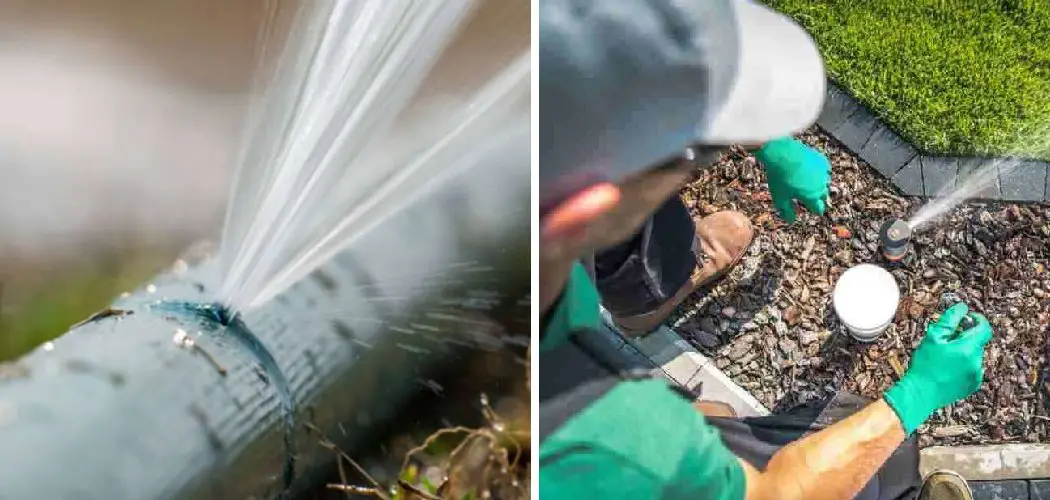A lush lawn and thriving landscape depend on an efficient sprinkler system. When your system works correctly, it keeps grass, shrubs, and flowers healthy across every zone. But puddles, dry patches, or unexplained spikes in your water bill may signal a hidden leak—often caused by a broken sprinkler pipe. Knowing how to find a broken sprinkler pipe protects your yard, conserves water, and saves you from expensive repairs. This step-by-step guide walks you through recognizing the warning signs, preparing the right tools, and systematically locating and addressing underground pipe problems before they escalate.
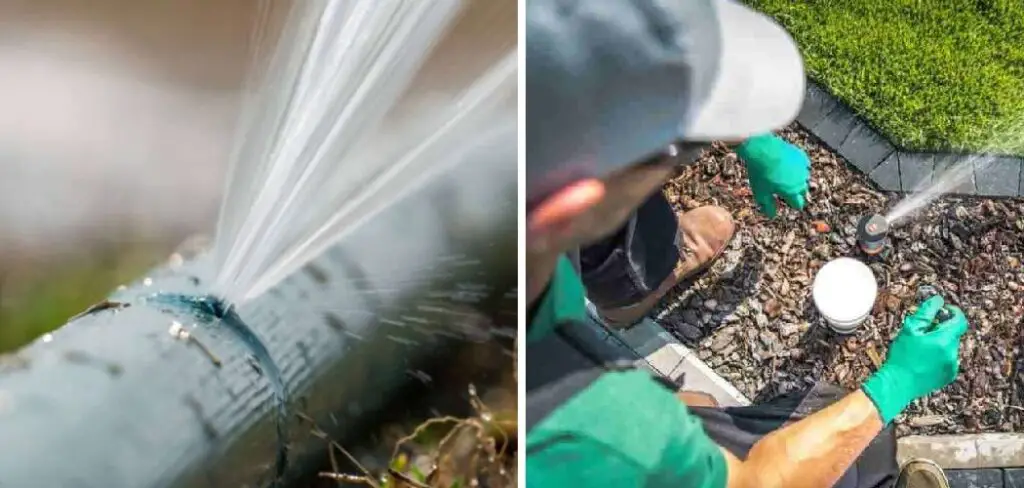
Understanding Your Sprinkler System
To diagnose or fix a problem effectively, it helps to know how residential sprinkler systems are set up. Most systems include a grid of pipes (usually PVC or polyethylene) running underground, delivering pressurized water from the main supply to various sprinkler heads and operated via valves and a controller. These pipes are durable but not immune to damage from a range of sources.
Causes of Sprinkler Pipe Damage
Sprinkler pipes can break for several reasons: shifting soil, encroaching tree roots, freezes, or accidental hits from tools during yard projects. Sometimes, a poor installation or incorrect pipe choice for your conditions can result in early wear or cracking. Over time, any of these factors can result in hidden breaks or leaks that go undetected until you notice problems on the surface.
Signs of a Broken Sprinkler Pipe
Identifying a leak or broken pipe early prevents further damage and costly repairs. Be alert to these common indicators:
Visible Indicators
Check your yard after the sprinkler runs for spots that remain wet, puddles that linger, or sinking or muddy ground. Unusually green or lush patches alongside dry, struggling areas can also be a sign of a leaking underground pipe.

Performance Issues in the System
Your first sign might be a decline in performance. Loss of water pressure, uneven spray, certain zones that fail to irrigate, or sprinkler heads that sputter and don’t pop up as they should can all point to a break.
Increased Water Bills
A sudden increase in water use—with no changes in your irrigation schedule—suggests a leak under the surface pumping wasted water into your lawn.
Tools and Preparations for Pipe Detection
Before you start searching, gather what you’ll need for an efficient and safe investigation.
Equipment You’ll Need
Equip yourself with a shovel, a soil probe or long screwdriver, your irrigation system’s water shutoff key or valve tool, and—if available—a leak detector or moisture meter. These tools help you test, dig, and home in on the suspected break’s location.
Pre-Detection Steps
Begin by switching off the sprinkler system at the controller and closing the main water supply. This minimizes water loss and avoids sudden geysers while you explore. If you have a system layout map, review it to spot the most likely locations for mainlines and valves.
How to Find a Broken Sprinkler Pipe: Methods to Find a Broken Sprinkler Pipe
Finding a broken underground pipe can require some detective work.
Visual Inspection
Walk along the paths where your pipes run, looking for changes in the lawn’s height, texture, or color. When your system is briefly turned on, bubbling, excessively muddy, or green patches may reveal the problem area. Once the system is off, check suspicious spots against drier areas nearby.
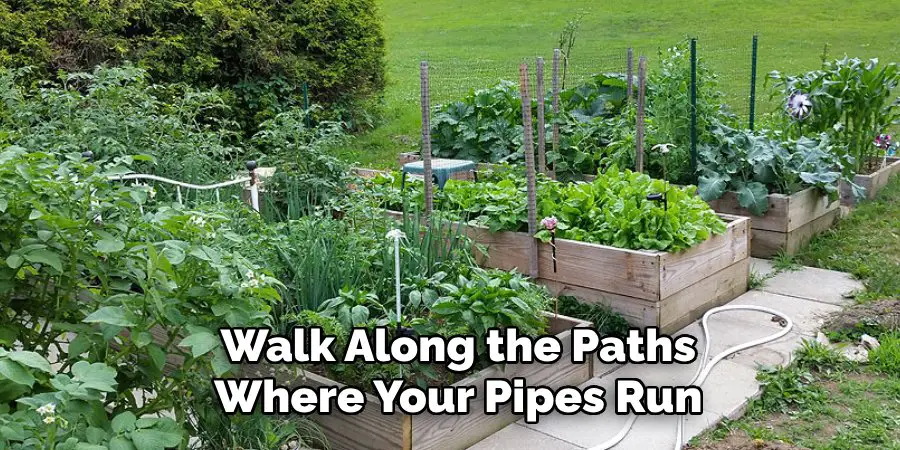
Detecting the Leak Using Pressure Loss
Test each irrigation zone one at a time. Where you see a dramatic drop in pressure or a sprinkler stops working between two heads, the section in between could be where the pipe is broken. Start your diagnosis close to the zone’s valve and check the spray performance outwards along the line.
Using a Soil Probe
Push a probe or screwdriver gently into damp areas to assess for unusually soft, water-saturated soil. If you feel sudden give or hear a telltale trickling sound, you’re likely close to the break. Advanced detection tools can further amplify water sounds or reveal wet spots well before you start digging.
Confirming the Break
Once you think you’ve found the trouble spot, take care when exposing the pipe for repair.
Excavating the Suspected Area
Dig slowly and carefully at the edge of the wet or sunken spot with a hand trowel or small shovel. Clear away soil layer by layer until the pipe is visible, being cautious not to worsen any damage. Continue until a good length of the pipe is exposed for full inspection.
Verifying the Damage
Check the pipe for visible cracks, holes, or failed joints. Even a small split can result in a major leak beneath your lawn. If there’s still water in the pipe, you may see it trickling or spurting from the exact location. Clean debris from the surface to get a clear look at what’s broken.
Temporary Fixes for Broken Sprinkler Pipes
If a permanent fix isn’t possible right away, a temporary repair keeps your system operational and prevents water waste. Use waterproof pipe tape or a rubber patch, tightly secured with hose clamps or strong zip ties, over the damaged area. These are only short-term solutions—schedule a full repair as soon as possible and keep a close eye on the patch for leaks.
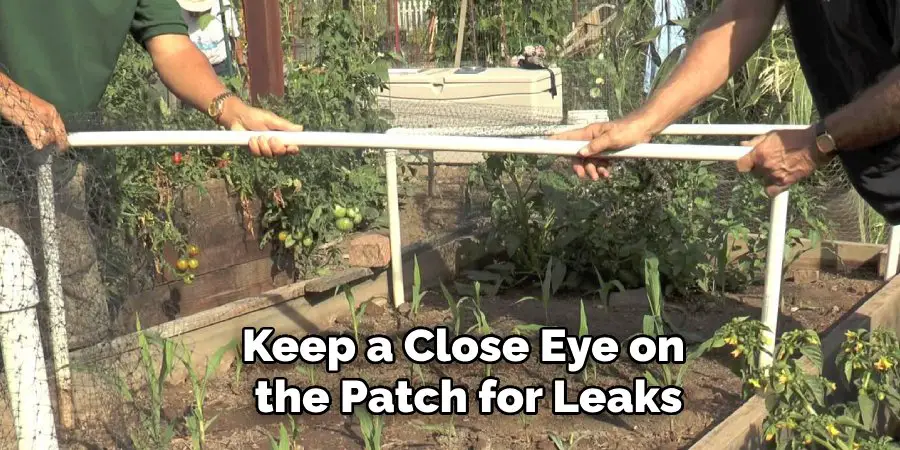
Preventing Future Breaks
Regular care and thoughtful landscaping can help you avoid recurrent problems with sprinkler lines.
Regular Maintenance Practices
Run the system at the start and end of each watering season to check for performance changes, pressure drops, or leaks. Inspect visible system parts—like valves and controllers—for wear or corrosion. If you live in a cold climate, winterize your system before the first freeze by draining pipes and shutting off external water lines.
Landscape Adjustments
Avoid planting large shrubs or deep-rooted trees near sprinkler lines. Mark irrigation layouts clearly and remind anyone doing yard work about underground pipes to prevent accidental damage with shovels or power tools. Store or distribute a system map with reference points for future home or maintenance needs.
When to Call a Professional
Notice Any Leaks:
If you notice any leaks or unusual water flow patterns in your irrigation system, it is best to call a professional for inspection and repairs. This could be a sign of damage to the pipes or valves, which can cause further issues if left unaddressed.
System Malfunctions:
Another reason to call a professional is if your irrigation system is not functioning properly. This could include uneven water distribution, broken sprinkler heads, or inconsistent scheduling. A professional can troubleshoot and diagnose the issue, making necessary repairs or adjustments to ensure the proper functioning of your system.
Complex Installation:
If you are planning on installing an irrigation system for the first time, or if you have a complex landscape with multiple zones and special features, it is best to hire a professional for the installation process. Installing an irrigation system requires technical knowledge and experience in order to properly design and install the system according to your specific needs. A professional can also help you choose the right components for your system, such as sprinkler heads, controllers, valves, and pipes.
Benefits of Addressing Broken Sprinkler Pipes Quickly
Saves Water and Money:
Repairing broken sprinkler pipes quickly can save you money on your water bill. A single leaking sprinkler head can waste up to 25,000 gallons of water over the course of a six-month irrigation season.
Protects Your Landscaping:
Broken sprinkler pipes can cause uneven watering or dry spots in your lawn and landscape, which can lead to dead plants and brown patches. By fixing broken pipes quickly, you can ensure that your landscaping stays healthy and vibrant.
Prevents Further Damage:
Ignoring broken sprinkler pipes can lead to more serious issues such as damage to your home’s foundation or underground utilities. Prompt repairs can prevent these costly damages from occurring.
Frequently Asked Questions About Broken Sprinkler Pipes
How Can I Tell If I Have a Broken Sprinkler Pipe?
Signs of a broken sprinkler pipe include water pooling in your yard, uneven watering, low water pressure, or unusually high water bills.
Can I Repair a Broken Sprinkler Pipe Myself?
While small leaks may be manageable for DIY fixes, larger problems often require professional help to ensure the repair is done correctly and doesn’t cause further damage.
How Much Does It Cost to Repair a Broken Sprinkler Pipe?
Repair costs vary depending on the severity of the issue, the location of the pipe, and whether professional services are needed. Regular maintenance can help prevent costly repairs.
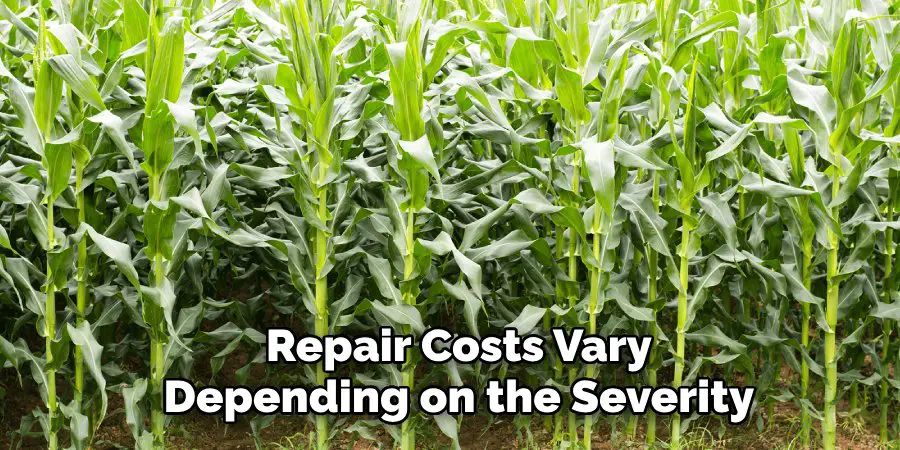
What Causes Sprinkler Pipes to Break?
Common causes include freezing temperatures, tree root intrusion, corrosion, or accidental damage from digging in the yard.
How Long Does It Take to Repair a Broken Sprinkler Pipe?
Most simple repairs can be completed within a few hours, while more complex issues may take longer, especially if requiring excavation or replacement of larger sections.
Conclusion
Understanding how to find a broken sprinkler pipe is key to maintaining a beautiful, healthy, and cost-efficient landscape. Stay alert for signs of trouble, use the right diagnostic tools, and tackle repairs without delay. By keeping up with simple inspections and preventative steps, you’ll ensure your sprinkler system delivers dependable performance year after year. If ever in doubt or if issues persist, don’t hesitate to call in an irrigation professional to protect your yard investment.
About
Outdoor Fixes is a distinguished figure in the world of Diy design, with a decade of expertise creating innovative and sustainable Diy solutions.
His professional focus lies in merging traditional craftsmanship with modern manufacturing techniques,
fostering designs that are both practical and environmentally conscious. As the author of diy,
outdoorfixes delves into the art and science of outdoorfixes-making, inspiring artisans and industry professionals alike.
Education RMIT University
(Melbourne, Australia) Associate Degree in Design (Outdoor Fixes) Focus on sustainable design, industry-driven projects,
and practical craftsmanship. Gained hands-on experience with traditional and digital manufacturing tools, such as CAD and CNC software.
Nottingham Trent University
(United Kingdom) Bachelor’s in outdoorfixes.com and Product Design (Honors) Specialized in product design with a focus on blending creativity with production
techniques. Participated in industry projects, working with companies like John Lewis and Vitsoe to gain real-world insights.
Publications and Impact
In diy, Outdoor Fixes his insights on indoor design processes, materials, and strategies for efficient production.
His writing bridges the gap between artisan knowledge and modern industry needs, making it a must-read for both budding designers and seasoned professionals.

